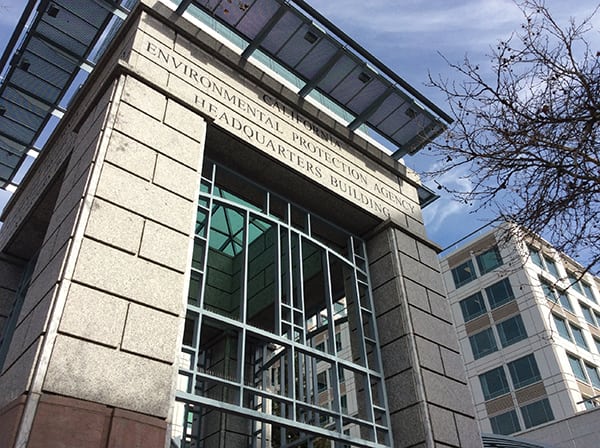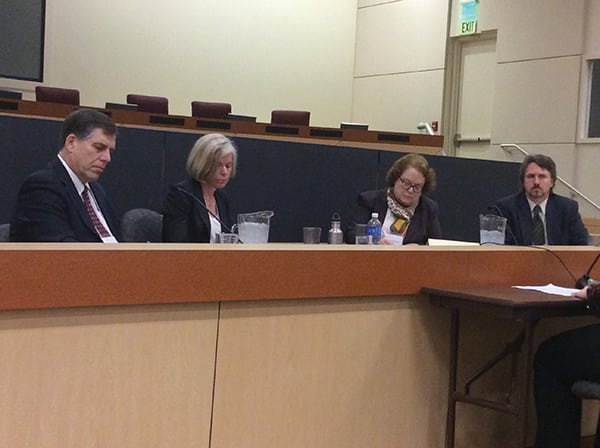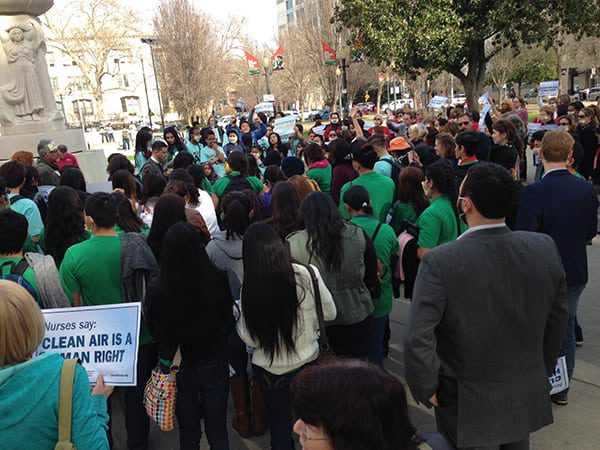Proposed Ozone Rule May Be the Most Costly Regulation Ever
Estimates vary widely, but even the Environmental Protection Agency acknowledges that lowering the ozone standard will cost billions. How will it affect power companies? It could make approval of new projects much more difficult.
Even in the annals of expensive environmental regulations and the hyperbole that often accompanies them, the numbers are eye-popping: $140 billion per year in lost gross domestic product, $1.05 trillion in compliance costs through 2040, 34 GW in accelerated coal plant retirements, and 1.4 million jobs lost across all affected sectors.
That, at least, is the impact of the Environmental Protection Agency’s (EPA’s) proposed new standard for ground-level ozone if a study from National Economic Research Associates (NERA) Economic Consulting, commissioned by the National Association of Manufacturers, is to be believed.
Small Step for Regulators—Giant Leap for “Regulatees”
On the face of it, the EPA’s proposal does not come across as an especially large change. The current standard of 75 ppb would be lowered to a 70 ppb to 65 ppb range, though the EPA is also soliciting comments on a 60 ppb standard.
NERA’s numbers (those above assume a 65 ppb standard) differ notably from those of the EPA. In contrast, the agency estimated that annual compliance costs would be a mere $3.9 billion for a 70 ppb standard and $15 billion for a 65 ppb standard. The costs would be more than offset by the health benefits, which the EPA projects would be up to $17 billion annually at 70 ppb and $38 billion at 65 ppb.
Like it or not, though, a new standard is coming.
Ozone forms through chemical reactions involving sunlight and a variety of volatile organic compounds, nitrogen oxides (NOx), and other substances emitted from power plants, motor vehicles, and industrial processes. High concentrations of ozone are known to have a number of impacts on human health, including respiratory and cardiovascular issues such as asthma.
In response to current National Ambient Air Quality Standards (NAAQS) for ozone, most power plants already have installed equipment to reduce NOx emissions. That could make meeting lower limits difficult. The NERA report estimated that 101 GW of additional coal-fired capacity could be forced into retirement as a result of the lowest possible, 60 ppb limit—34% of the baseline capacity total. (For more on the dueling estimates, see this month’s BIG PICTURE in Global Monitor.) NERA cites EPA data showing that the power sector overall reduced NOx emissions 73% between 1990 and 2013.
Periodic Checkup
Under the Clean Air Act (CAA), the EPA must review NAAQS every five years and make revisions as may be appropriate based on the relevant scientific and public health data. The current 75 ppb standard was set in 2008 by the George W. Bush administration, even though the EPA’s Clean Air Scientific Advisory Committee had recommended a 60 ppb to 70 ppb standard.
The EPA again wanted to revise the standard lower in 2011, but the Obama administration directed the agency to withdraw the proposal. That action was challenged in court, and the EPA was ordered to come up with a new rule.
One of the challenges is that, under the CAA, the EPA is not allowed to consider the economic impact of setting NAAQS, a stricture that was reinforced by a 2001 Supreme Court case arising out of challenges to the 1997 revisions. (Costs are taken into account in implementing the standards, just not in setting them.)
Critics of the lower standard have pointed out that around 100 million people live in areas that are in nonattainment for the current 75 ppb standard. At the state level, 27 are in nonattainment (including the District of Columbia). The new standards could put the majority of the U.S. population in nonattainment areas: 358 counties nationwide would currently be in nonattainment under a 70 ppb standard, and 558 would fall short of a 65 ppb standard.
This is a significant issue for the power sector because a new source of pollution, such as a power plant, that is proposed for an area in nonattainment must obtain a nonattainment new source review permit based on its lowest achievable emission rate. In addition, a new source must arrange for or purchase offsetting emissions reductions. This is a substantially more difficult process than what is required for new projects applying within attainment areas, which is essentially showing that the plant will not cause the area to exceed the standard.
Critics have also pointed out that certain areas, especially California and other parts of the western U.S., have naturally occurring levels of ozone above the proposed standards, making compliance in these regions potentially impossible.
The EPA, while acknowledging these criticisms, asserts that the “vast majority” of nonattainment counties would come into compliance by 2025 without any additional action. Also, it is proposing to grandfather into the old standards sources that complete their Prevention of Significant Deterioration application before the new standard goes into effect.
Getting Public Input
The EPA held three public hearings—on Jan. 29 in Arlington, Texas, and Washington, D.C., and on Feb. 2 in Sacramento, Calif. (Figure 1)—offering the opportunity to comment on the proposed standards. The EPA also accepted written comments through Mar. 17.
 |
| 1. Open house. The California Environmental Protection Agency Headquarters Building was the venue for the public hearing in Sacramento. Source: POWER |
“Each state, as needed, will determine how to best meet the standard in a way that makes the most sense for that area,” Steve Page, director of the EPA Office of Air Quality Planning and Standards, said during his opening statement to begin the hearing in Sacramento.
Attendees at the public hearings were afforded five minutes to give comments. Many industry groups—including the American Coal Council, the American Petroleum Institute (API), the American Forest & Paper Association, the American Chemistry Council, the National Rural Electric Cooperative Association, and Industrial Energy Consumers of America—sent representatives to offer feedback to the EPA panel (Figure 2).
 |
| 2. All ears. In Sacramento, the hearing panel (from left to right) consisted of EPA directors Steve Page and Deborah Jordan, and scientists Susan Stone and Pat Dolwick. Source: POWER |
Ted Steichen, policy advisor for API, suggested that new ozone standards are simply not needed. Steichen said that the current 75 ppb limit is working to protect air quality and public health. He also stressed the negative effects a lower standard would have on the economy and jobs, as did most of the industry representatives who testified. Allen Biaggi, speaking on behalf of the Nevada Mining Association, questioned the science behind the rule.
“Research has strongly suggested elevated, naturally occurring ozone levels occur throughout the arid West due to native vegetation. Other naturally occurring phenomenon, such as wild fire, also make contributions,” Biaggi argued. “It is poor public policy to impose restrictions on man-made sources to compensate for naturally occurring conditions.”
However, the vast majority of comments came from students (see sidebar), parents, and representatives of environmental groups, such as the Sierra Club, the Environmental Defense Fund, and Earthjustice, some of whom had loaded onto buses in Southern California as early as 1 a.m. to make the trip north for the 9 a.m. start time.
Asthma and other health-related issues associated with smog were the main reasons proponents cited for supporting a lower limit. To raise awareness of the issue, many of those who testified before the panel in Sacramento, and some members of the California Nurses Association, demonstrated publicly in Cesar Chavez Plaza Park—across the street from the hearing—after lunch on Feb. 2 (Figure 4).
 |
| 4. Taking a stand. Demonstrators gathered to plead for a new, lower ozone limit while the public hearing took place in an auditorium across the street. Source: POWER |
The EPA says its proposal will expand the ozone-monitoring season for many states and update the Air Quality Index to ensure people are notified when air quality is unhealthy.
Since 1980, national average ozone levels have decreased 33%. The agency says that it will issue a final rule by Oct. 1, 2015. ■
— Aaron Larson and Thomas W. Overton, JD are POWER associate editors.
